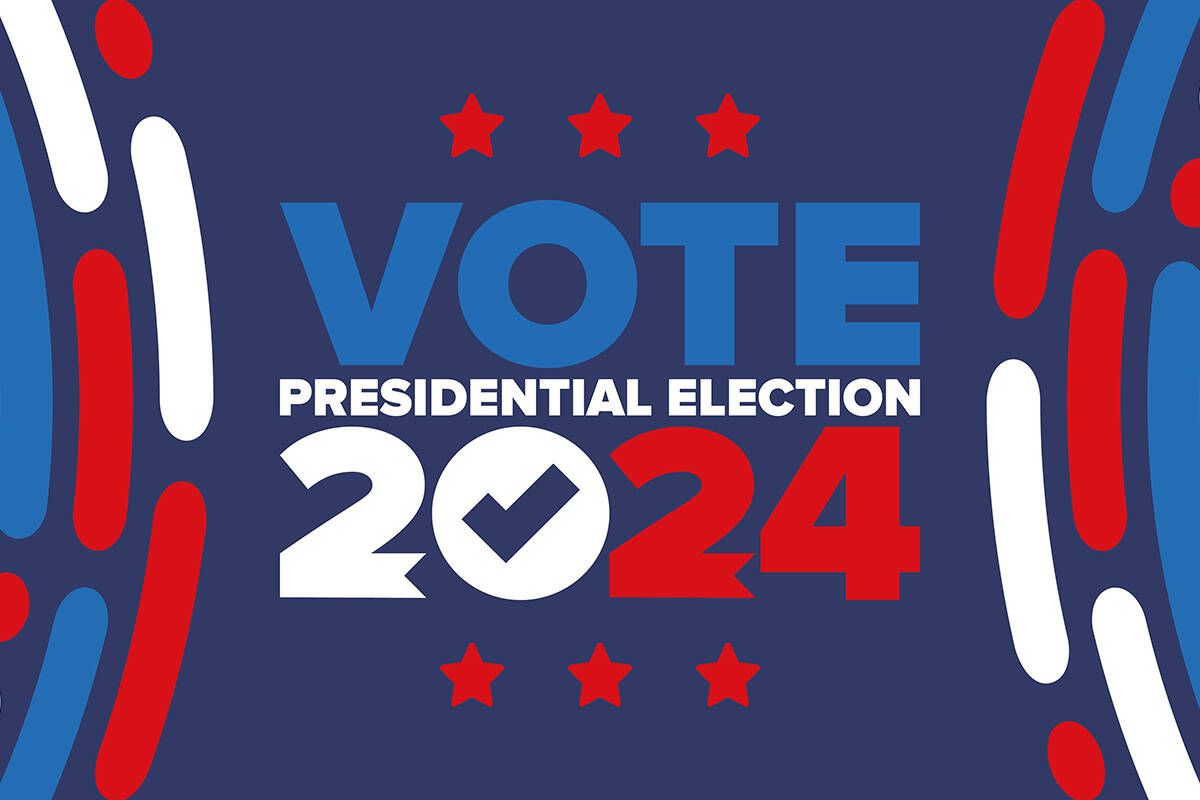5 reasons why Nevada may decide the 2024 presidential race
All eyes will be on Nevada in November as a swing state likely to determine who will be the next president. After all, the Silver State has a long-standing reputation for picking the candidate who will head to the White House.
“It’s hard to think of a place where an individual vote is more valuable than Nevada,” said David Wasserman, senior editor and elections analyst for The Cook Political Report. It is hosting a competitive presidential race, and it also has competitive congressional races, he said.
But why is Nevada a swing state? How did it get there? And why does it matter?
1. We have a long history.
Nevada began as a swing state, at least in the mind of Abraham Lincoln, according to Michael Green, a history professor at UNLV.
It received statehood in 1864 because Lincoln was concerned about his reelection, Green said. The Constitution of Nevada was telegraphed to Congress days before the presidential election to help ensure he had three more electoral votes. The contribution ended up being minimal; Lincoln ended up winning his reelection 212 to 21.
For years, politicians have looked to Nevada, and even specific counties, as a bellwether for what is to come.
During the 1960 election cycle, John F. Kennedy called Nevada lawyer Ralph Denton, who co-chaired the Kennedy-Johnson campaign for Nevada, and asked, “how is Esmeralda County going to vote?” according to Green. At the time, Esmeralda County had picked the winning candidate in every presidential election that century, Green said.
Nevada’s more recent reputation as a swing state in modern politics really began when the population of the state began rapidly increasing around the 1980s, according to Rebecca Gill, a political science professor at UNLV who co-wrote the Nevada chapter of the 2022 book “Presidential Swing States.”
2. We consistently pick the winner. Usually.
Swing states tend to be bellwethers. If a candidate wins that state, that should be a good predictor that the candidate is going to win the presidential election, according to David Schultz, a political science professor at Hamline University in St. Paul, Minnesota.
From 1912 and until now, on only two occasions have Nevada’s electoral votes not gone to the person who became president, according to Green. One was Gerald Ford, who lost to Jimmy Carter in 1976, and the other was Hillary Clinton, who lost to Donald Trump in 2016, according to Green.
“So we have had quite a streak going,” Green said.
The last time Nevada picked a Republican president was in 2004, but Democrats have been hanging on by a thread for the last several cycles, according to Wasserman. That is in part due to Democrats slipping with Hispanic and non-college white voters, Wasserman said.
One of the reasons why Democrats have been able to hold onto the Silver State is because of the heavy presence of organized labor relative to other states, he said.
3. We have a balance of political parties and attitudes.
Swing states usually have a large percentage of independent voters, closely matched candidates and competitive races coming down to five percentage points or less, according to Schultz. Swing states also tend to have both Democratic and Republican strongholds.
Nevada fits that mold. Nonpartisan voters make up around 34 percent of the state’s registered voters, with Democrats at 30 percent and Republicans at 29 percent, according to the secretary of state’s office. Areas like Clark County and Washoe have a strong Democratic base, while Nevada’s more rural areas tend to favor Republicans.
The Silver State’s races also are consistently close. In 2022, Democratic Sen. Catherine Cortez Masto won her re-election by just 0.81 of a percentage point. In recent presidential elections, the winner walked out receiving just two or three percentage points more than the loser.
Elections in a swing state like Nevada come down to moving a small number of voters, Schultz said. Whichever side is more successful at moving those voters ends up winning, he said.
“We are still one of the major puzzle pieces for each side as they’re trying to figure out how they’re going to get to the magic number,” Gill said.
4. America is looking increasingly like us.
Nevada is a diverse state, and demographers anticipate the rest of the country’s population will look more like Nevada over the course of the next couple of decades, Gill said. That makes Nevada a good indicator of how the rest of the country might be feeling.
If a candidate does well here, they could theoretically do well elsewhere in the country, Green said.
“It’s almost like the song ‘New York, New York.’ If you can make it there, you can make it anywhere,” Green said. “If you can navigate that we are a very diverse community, ethnically, religiously, economically, and do well here, you should be able to do well in some other places.”
5. It might come down to us on Election Day, and candidates know it.
Candidates and political parties are aware of the influence swing states like Nevada will have on the 2024 election, and their pocketbooks and calendars reflect that. Surrogates and candidates flock to the Silver State during the election cycle, and Nevadans cannot avoid the onslaught of political advertisements leading up to Election Day.
The 2024 presidential election is expected to be the most expensive cycle in history, according to AdImpact.com, which projects $10.2 billion in political expenditures, $576 million of which is expected to be spent in Nevada.
Nevadans can expect to see the biggest names in the political sphere stop by in the next six months, from former President Donald Trump and President Joe Biden, to perhaps well-known figures like Barack Obama. This year alone, Vice President Kamala Harris visited four times to bring attention to the Biden-Harris campaign.
Nevada only has six electoral college votes, far fewer than other states. But in presidential races that come down to just a few electoral college votes, Nevada matters.
In 2000, George W. Bush defeated Al Gore 271 to 266 Electoral College votes, but lost the popular vote by some 500,000. In Nevada, Bush received 49.49 percent of the vote, and Gore received 45.94 percent.
If the state is seen as “gettable” by the political parties, they will spend money targeting the voters in the state, Gill said.
“As long as we continue to be relatively unpredictable, in terms of who we are throwing our electoral college vote behind, we will still be attracting national attention and spending from these national campaigns,” Gill said. “It’s only when states become predictable that they start losing the kind of attention from the national politicians.”
Contact Jessica Hill at jehill@reviewjournal.com. Follow @jess_hillyeah on X.



















